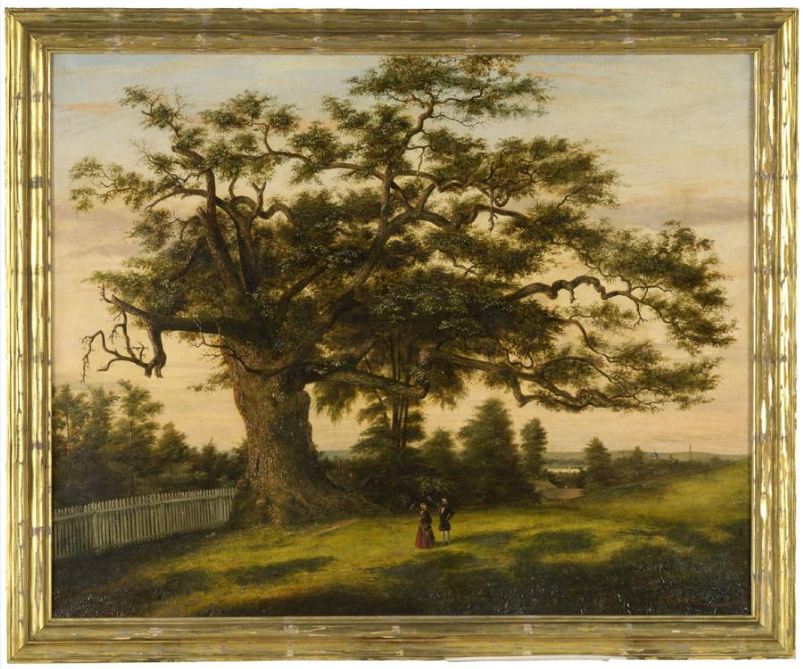Last Updated: March 13, 2025
The Charter Oak is a symbol of Connecticut’s enduring tradition of representative government and self-rule.
Connecticut’s Charter of 1662
The legend behind the tree began in 1662 when King Charles II of England granted the Connecticut General Assembly a Royal Charter. The “Connecticut Charter” guaranteed the colony the right to self-govern and ability to elect its own officials without interference from the crown. This liberal charter served as the state’s highest law for approximately 25 years. In 1687, King James II attempted to include Connecticut in a “Dominion of New England,” which was to include the New England colonies as well as New York. James appointed Sir Edmond Andros as the new governor of this region. When Andros arrived in Hartford to take control of the government and confiscate the charter, Governor Robert Treat refused to surrender the treaty.
Hiding the Charter
The two opposing sides met on October 31, 1687 in a Hartford meetinghouse that stood on the site that the Old State House occupies today (possibly Sanford’s Tavern). According to legend, the candles were blown out in the midst of the debate, and when they were relit the charter was gone. It was supposedly given to Captain Joseph Wadsworth and hidden in a large hollow oak tree on the nearby Wyllys estate.
Although Andros returned to Britain without the charter, Connecticut still became part of the Dominion of New England. King James II’s rule, however, was short-lived. When William and Mary became King and Queen in 1689, they reinstated many of the provisions included in the original charter. The charter served as the state constitution until 1818.
A Symbolic Legend
Due to the events, the tree became known as the Charter Oak. Connecticut revered the tree as a symbol of freedom and Yankee shrewdness. Over the 18th and 19th centuries, the legend of the Charter Oak became more and more embellished. Due to a lack of accounts from the time, however, it is difficult to determine how much of the legend (if any) actually occurred.
On August 21, 1856, the great tree fell during a lightning storm. At the time, the tree was thought to be over a thousand years old and approximately 21 feet in circumference. Hartford held a large funeral ceremony for the tree upon its falling. Someone draped a flag over the tree, people gave speeches in honor of it, the Colt band played dirges, church bells throughout the city tolled, and a parade marched the streets to honor the Charter Oak.
To preserve the wood of the famous tree, many artifacts were carved from its wood. Those memorabilia can be seen in various locations throughout the state, including in the State Senate Chamber, which houses the “Charter Oak Chair.” Today, many places around the state include the name “Charter Oak” and the white oak tree is Connecticut’s state tree.
This article was partly adapted using content from the Imagining Connecticut exhibit that formerly hung in the Connecticut State Capitol and Legislative Office Building starting in 2000.
This article has been updated, learn more about content updating on ConnecticutHistory.org here.









